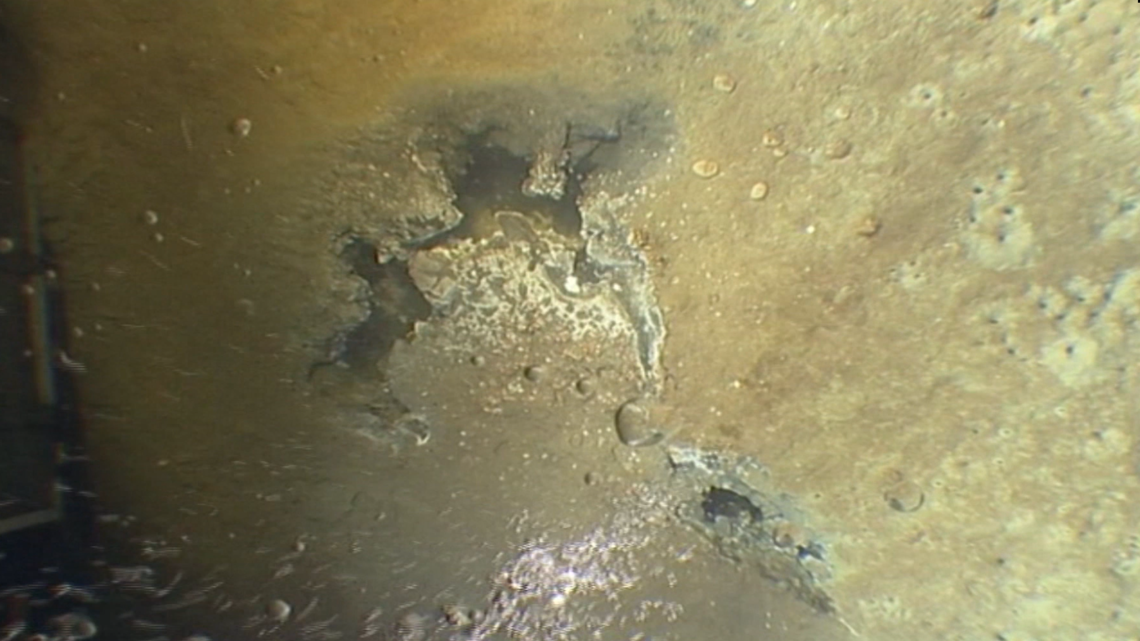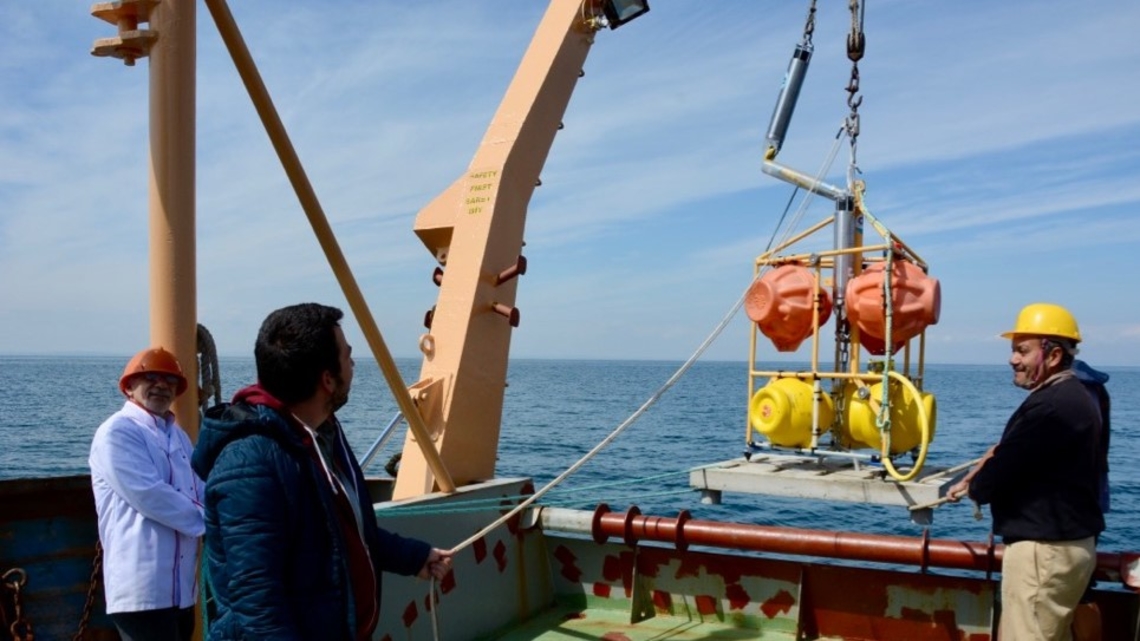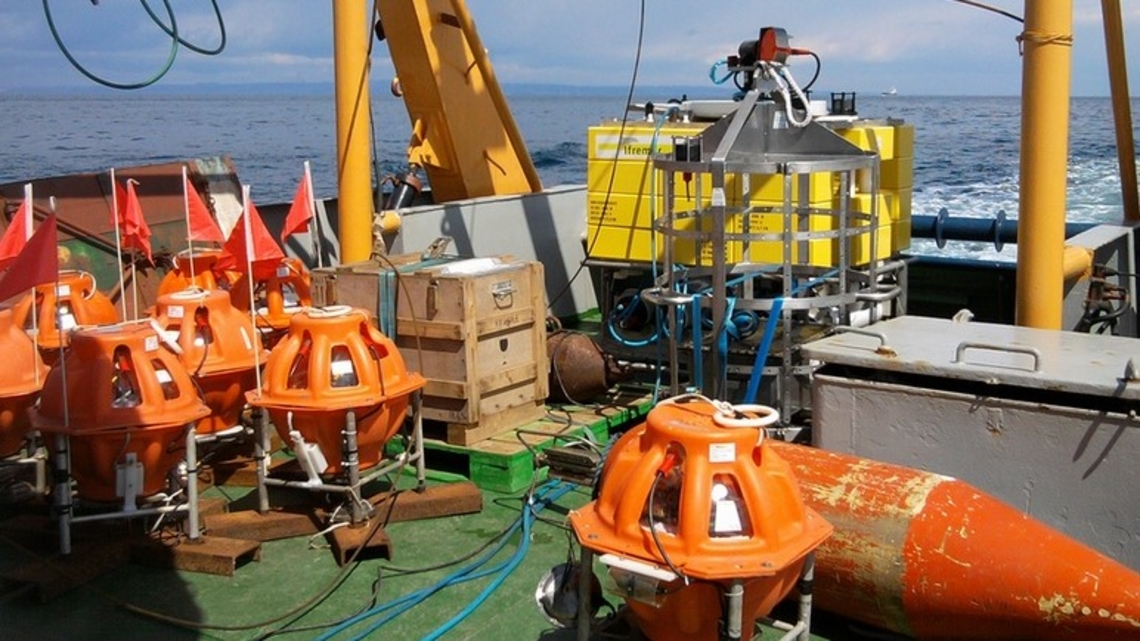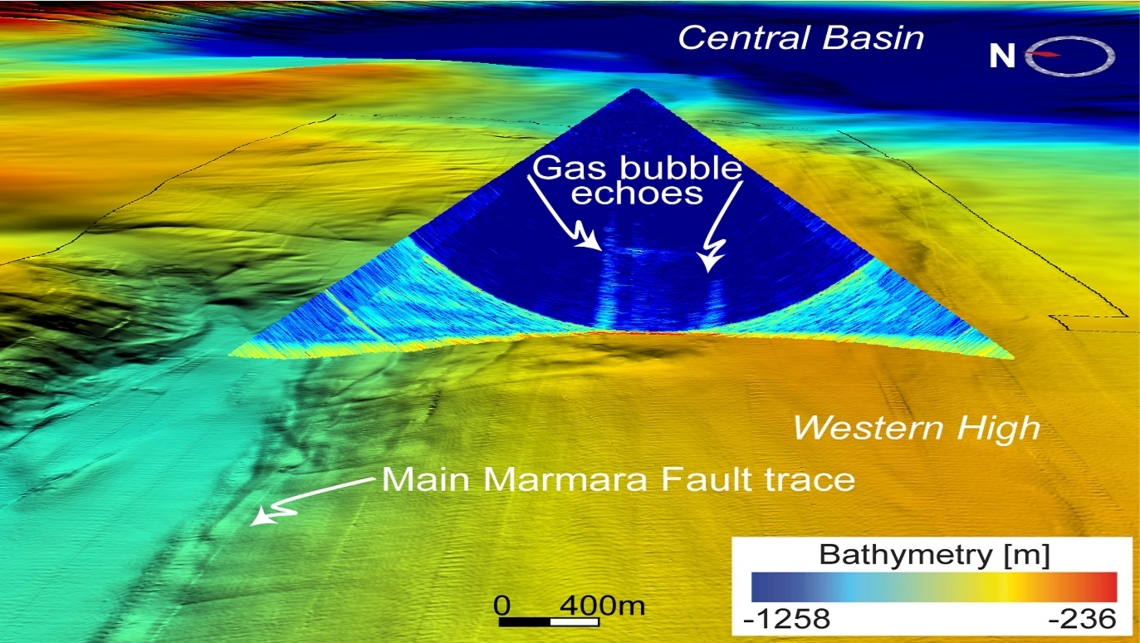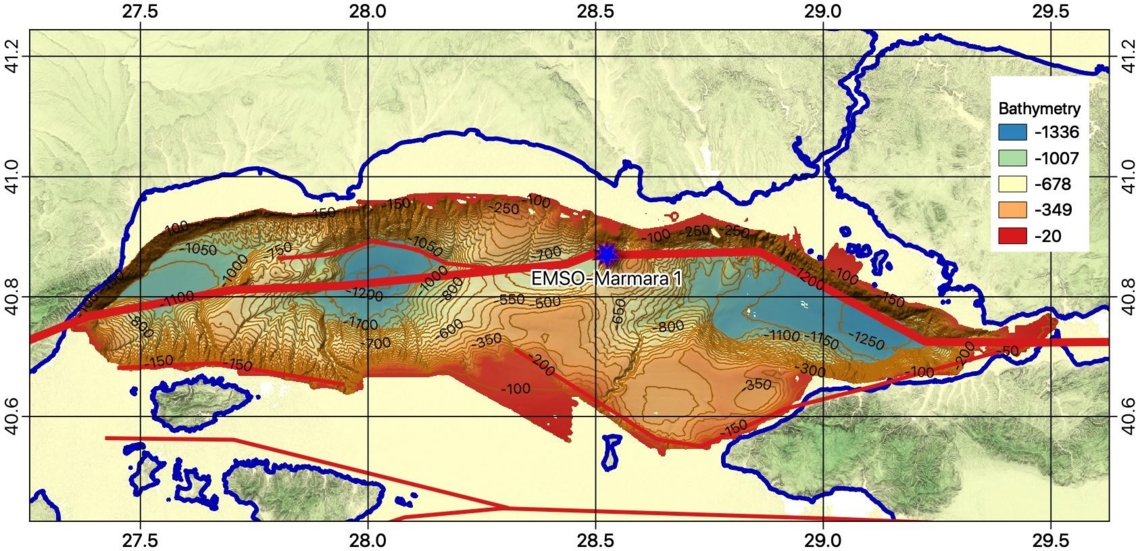EMSO-MARMARA, Scientific objectives
The Sea of Marmara is located on the Northern branch of the North Anatolian Fault, which exposes the Metropole of Istanbul to a high probability of a large earthquake (M > 7) (e.g. Aochi et al., 2015; Bulut et al., 2019). The North Anatolian Fault system is a major transform plate boundary, accommodating ≈25 mm/yr of strike-slip motion (Reilinger et al., 2006). Hazard assessment for its marine part is challenging but also presents valuable opportunities for innovation and scientific breakthrough. Remarkably stable P and T conditions at moderate depths enables seafloor geodesy by acoustic methods. Widespread gas emissions make it a choice area for studying the interactions between fluid flow, faults, and seismicity (Geli et al., 2008; Dupré et al., 2015; Ruffine et al., 2015; Henry et al., 2018; Hensen et al., 2019). Moreover, the Sea of Marmara gateway, connecting the Black Sea to the Mediterranean through the Bosphorus and Dardanelles straights, appears in the geological record as highly sensitive to climate and sea-level change (e.g. Çağatay et al., 2009; Çağatay et al., 2019).
Instrumental deployments at Marmara Site aim at:
- Developing methods to monitor gas migration in the sediment and emissions in the water column (Tary et al., 2012; Bayrakci et al., 2014; Batsi et al., 2019)
- Evaluating interseismic loading rate by seafloor acoustic geodesy (Sakic et al., 2016; Lange et al., 2019).
- Monitoring microseismicity to understand its relationship with fluid migration (Geli et al., 2018; Tary et al., 2019).
- Comparing pressure sensor performance and stability for applications in marine geodesy.
- Monitoring of hydrodynamic perturbations caused by meteorological events and earthquakes to understand the relationships between earthquakes, tsunamis and seismoturbidites (ongoing work within MAREGAMI ANR-TÜBITAK PRCI).
Learn More
Aochi, H., & Ulrich, T. (2015). A Probable Earthquake Scenario near Istanbul Determined from Dynamic Simulations. Bulletin of the Seismological Society of America, 105(3), 1468–1475. https://doi.org/10.1785/0120140283
Bayrakci, G., Scalabrin, C., Dupré, S., Leblond, I., Tary, J., Lanteri, N., Augustin, J., Berger, L., Cros, E., Ogor, A., Tsabaris, C., Lescanne, M., & Géli, L. (2014). Acoustic monitoring of gas emissions from the seafloor. Part II: a case study from the Sea of Marmara. Marine Geophysical Research. https://doi.org/10.1007/s11001-014-9227-7
Batsi, E., Tsang‐Hin‐Sun, E., Klingelhoefer, F., Bayrakci, G., Chang, E. T. Y., Lin, J., Dellong, D., Monteil, C., & Géli, L. (2019). Nonseismic Signals in the Ocean: Indicators of Deep Sea and Seafloor Processes on Ocean‐Bottom Seismometer Data. Geochemistry, Geophysics, Geosystems, 20(8), 3882–3900. https://doi.org/10.1029/2019GC008349
Bulut, F., Aktuğ, B., Yaltırak, C., Doğru, A., & Özener, H. (2019). Magnitudes of future large earthquakes near Istanbul quantified from 1500 years of historical earthquakes, present-day microseismicity and GPS slip rates. Tectonophysics, 764(July 2018), 77–87. https://doi.org/10.1016/j.tecto.2019.05.005
Çağatay, M. N., Eriş, K. K., Makaroğlu, Ö., Yakupoğlu, N., Henry, P., Leroy, S. A. G., Uçarkuş, G., Sakınç, M., Yalamaz, B., Bozyiğit, C., & Kende, J. (2019). The Sea of Marmara during Marine Isotope Stages 5 and 6. Quaternary Science Reviews, 220, 124–141. https://doi.org/10.1016/j.quascirev.2019.07.031
Çaǧatay, M. N., Eriş, K., Ryan, W. B. F., Sancar, Ü., Polonia, a., Akçer, S., Biltekin, D., Gasperini, L., Görür, N., Lericolais, G., & Bard, E. (2009). Late Pleistocene-Holocene evolution of the northern shelf of the Sea of Marmara. Marine Geology, 265, 87–100. https://doi.org/10.1016/j.margeo.2009.06.011
Dupré, S., Scalabrin, C., Grall, C., Augustin, J.-M., Henry, P., Şengör, A. M. C., Görür, N., Çağatay, M. N., & Géli, L. (2015). Tectonic and sedimentary controls on widespread gas emissions in the Sea of Marmara: Results from systematic, shipborne multibeam echo sounder water column imaging. Journal of Geophysical Research: Solid Earth, 120(5), 2891–2912. https://doi.org/10.1002/2014JB011617
Géli, L., Henry, P., Zitter, T., Dupré, S., Tryon, M., Çaǧatay, M. N., et al. (2008). Gas emissions and active tectonics within the submerged section of the North Anatolian Fault zone in the Sea of Marmara. Earth and Planetary Science Letters, 274(1–2). https://doi.org/10.1016/j.epsl.2008.06.047
Géli, L., Henry, P., Grall, C., Tary, J.-B., Lomax, A., Batsi, E., et al. (2018). Gas and seismicity within the Istanbul seismic gap. Scientific Reports, 8(1). https://doi.org/10.1038/s41598-018-23536-7
Henry, P., Grall, C., Kende, J., Viseur, S., Özeren, M. S., Şengör, A. M. C., Dupré, S., Scalabrin, C., & Géli, L. (2018). A statistical approach to relationships between fluid emissions and faults: The Sea of Marmara case. Deep Sea Research Part II: Topical Studies in Oceanography, 153(xxxx), 131–143. https://doi.org/10.1016/j.dsr2.2018.05.010
Hensen, C., Duarte, J. C., Vannucchi, P., Mazzini, A., Lever, M. A., Terrinha, P., et al. (2019). Marine Transform Faults and Fracture Zones: A Joint Perspective Integrating Seismicity, Fluid Flow and Life. Frontiers in Earth Science, 7, 1–29. https://doi.org/10.3389/feart.2019.00039
Lange, D., Kopp, H., Royer, J.-Y., Henry, P., Çakir, Z., Petersen, F., Sakic, P., Ballu, V., Bialas, J., Özeren, M. S., Ergintav, S., & Géli, L. (2019). Interseismic strain build-up on the submarine North Anatolian Fault offshore Istanbul. Nature Communications, 10(1), 3006. https://doi.org/10.1038/s41467-019-11016-z
Reilinger, R., McClusky, S., Vernant, P., Lawrence, S., Ergintav, S., Cakmak, R., et al. (2006). GPS constraints on continental deformation in the Africa-Arabia-Eurasia continental collision zone and implications for the dynamics of plate interactions. Journal of Geophysical Research: Solid Earth, 111, 1–26. https://doi.org/10.1029/2005JB004051
Ruffine, L., Germain, Y., Polonia, A., de Prunelé, A., Croguennec, C., Donval, J.-P., Pitel-Roudaut, M., Ponzevera, E., Caprais, J.-C., Brandily, C., Grall, C., Bollinger, C., Géli, L., & Gasperini, L. (2015). Pore water geochemistry at two seismogenic areas in the Sea of Marmara. Geochemistry, Geophysics, Geosystems, 16(7), 2038–2057. https://doi.org/10.1002/2015GC005798
Sakic, P., Piété, H., Ballu, V., Royer, J.-Y., Kopp, H., Lange, D., Petersen, F., Özeren, M. S., Ergintav, S., Geli, L., Henry, P., & Deschamps, A. (2016). No significant steady state surface creep along the North Anatolian Fault offshore Istanbul: Results of 6 months of seafloor acoustic ranging. Geophysical Research Letters, 43(13), 6817–6825. https://doi.org/10.1002/2016GL069600
Tary, J. B., Géli, L., Guennou, C., Henry, P., Sultan, N., Çaǧatay, N., & Vidal, V. (2012). Microevents produced by gas migration and expulsion at the seabed: A study based on sea bottom recordings from the Sea of Marmara. Geophysical Journal International, 190, 993–1007. https://doi.org/10.1111/j.1365-246X.2012.05533.x
Tary, J. B., Géli, L., Lomax, A., Batsi, E., Riboulot, V., & Henry, P. (2019). Improved detection and Coulomb stress computations for gas-related, shallow seismicity, in the Western Sea of Marmara. Earth and Planetary Science Letters, 513, 113–123. https://doi.org/10.1016/j.epsl.2019.02.021

